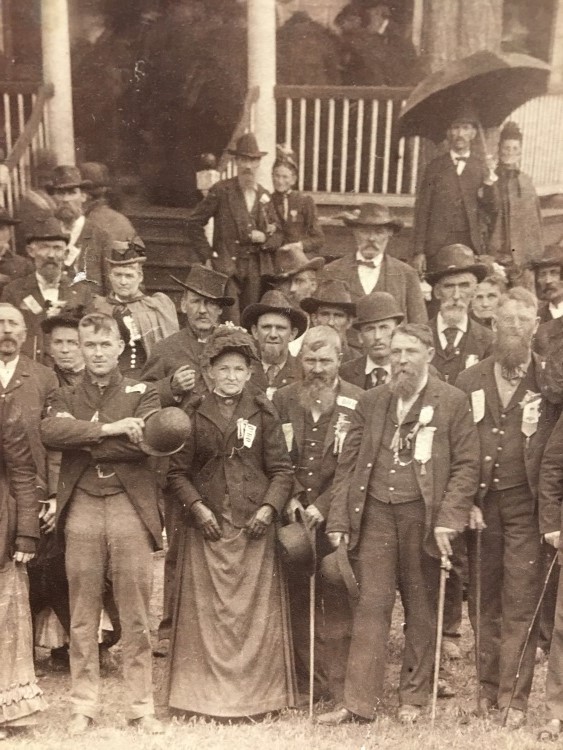
AAS collects American printed materials of all kinds, including multiple types of ephemera, from broadsides to tickets to ribbon badges. We have recently completed an illustrated inventory of the Society’s collection of more than 170 ribbon badges, ranging in date from 1824 to 1900. The inventory includes ribbons worn during political campaigns and civic events as well as badges worn by women fighting for the right to vote, children attending school activities, and citizens attending events such as fairs, dedications, and parades. These objects were intended to be worn on the clothing, usually pinned to a lapel, shirt front, or dress. Several pre-1900 photographs in the Society’s collection feature people proudly wearing ribbon badges at reunions, field days, and sporting events.
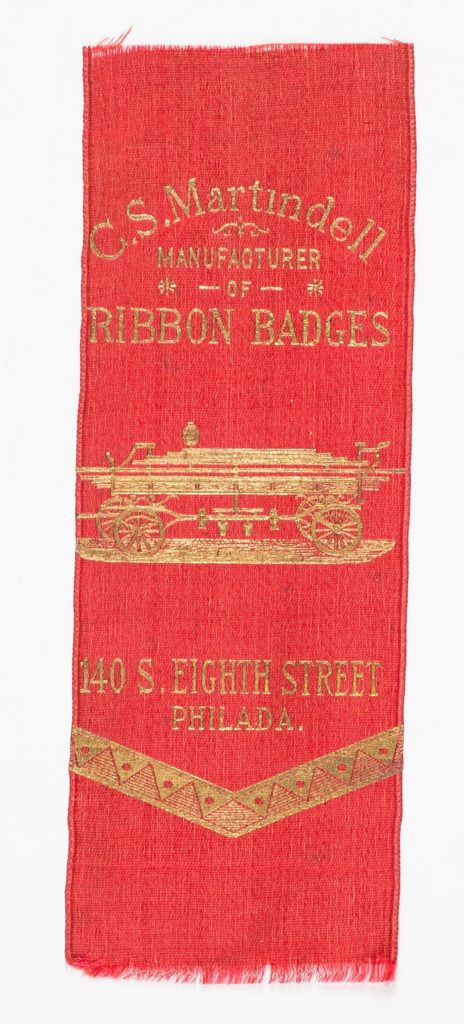
In the nineteenth century, ribbon badges were engraved, lithographed, or run through relief letterpress presses; all of these printing processes are represented in the collection. Some printers, after seeing the profitability of printing on silk and other fabrics, specialized in the trade and hired skilled artists to create the visual designs that characterize many of the earliest examples. During the nineteenth century, ribbon printers offered pictures, gilt lettering, fringe options, and more, often creating advertisements for their services in the form of a ribbon. Demand increased steadily as the century progressed. In August 1872 an article in a St. Louis newspaper documented the craze for political ribbons in that city, noting “The sales are large and increasing. The St. Louis dealers disburse on average of 1,000 or 1,600 a day. The demand is largest in the country, although large amounts are sold by canvassers on the streets and on trains.”[1] By 1910, a well-equipped printing shop could create 4,000 ribbons per hour.[2]
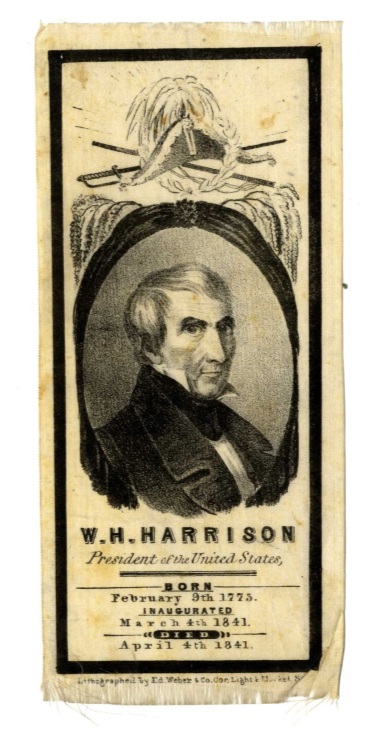
Customers would acquire ribbons in various ways. For events at fraternal organizations and schools, ribbons were distributed directly to membership and students. For public events, such as dedications, parades, and funerals of important individuals, printers would place advertisements in local newspapers to let people know special printed badges were available. After the sudden death of President William Henry Harrison on April 4, 1841, for example, many printers quickly offered ribbons for sale. An April 20th advertisement in a Baltimore newspaper promoted mourning badges for the president offered by local publisher H. A. Turner priced between twelve and nineteen cents per piece.[3]
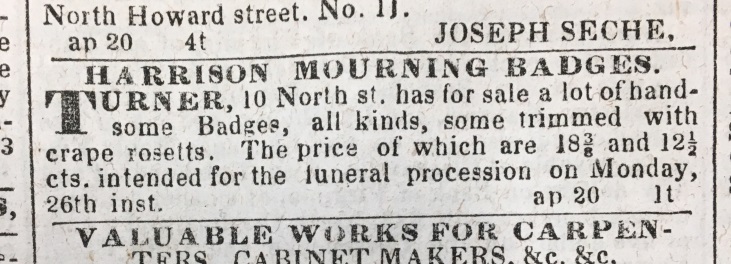
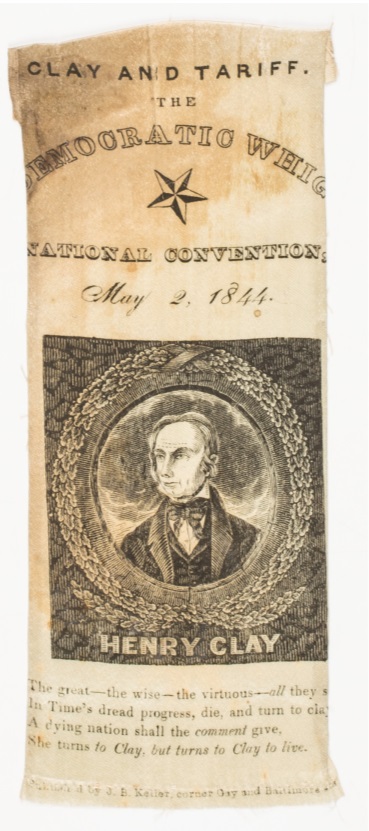
Printed ribbons were used for all kinds of special events and promotions throughout the nineteenth century. Many ribbons that survive today were used during political campaigns. An affordable way for candidates to rally their constituents, ribbon badges were first used in the 1820s and 30s during the presidential campaigns of Andrew Jackson and Henry Clay. Thousands of ribbons were also created to promote social causes such as temperance and women’s suffrage, to mark local and regional celebrations, and to celebrate anniversaries. They were given out in schools for good attendance or behavior, used as awards at sporting events and fairs, and were worn by trade groups and firemen marching in parades. By 1875, printed ribbon badges had become nearly ubiquitous at most civic events across the country from New York to California.
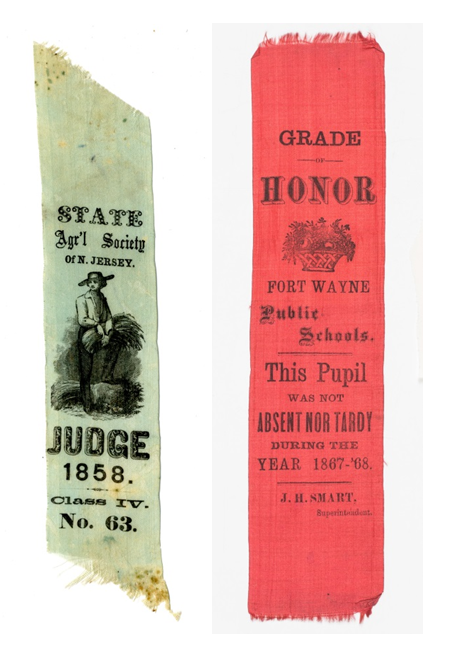
Reward ribbon for good attendance, Fort Wayne, Indiana, 1868.
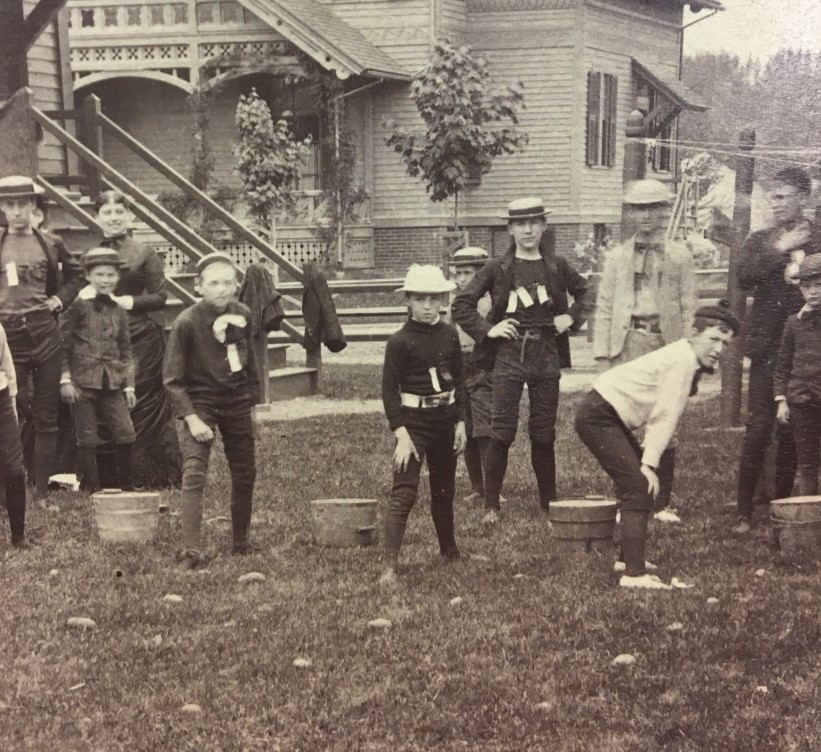
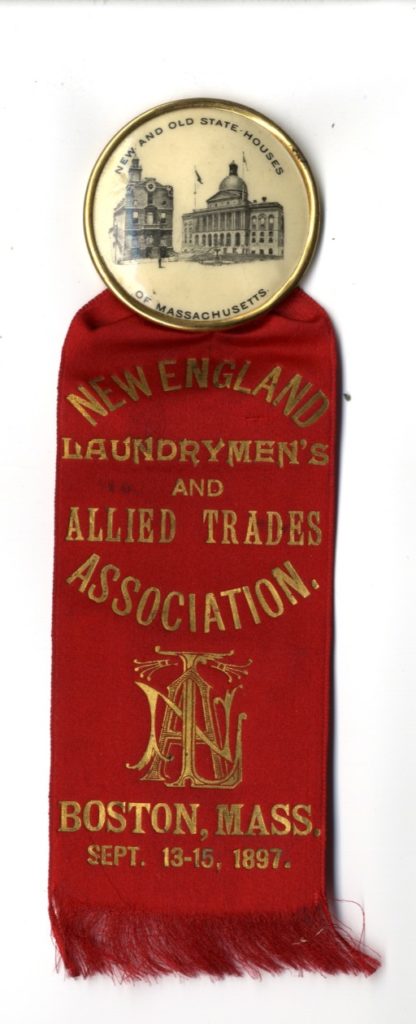
Printed ribbon badges started to decline in popularity at the end of the nineteenth century due to the development of the celluloid button, first patented by Whitehead Hoag & Co. in 1896. The buttons were sturdier, cheaper to produce, and provided better quality images that were less fragile than silk ribbons. Several examples of early buttons are also found within this collection and can be seen in the inventory.
Our hope is that the new illustrated inventory will bring these fragile, ephemeral objects to the attention of scholars and collectors. We continue to add printed ribbons to the collection, so be sure to check back now and then to see the latest acquisitions.
[1] Daily Missouri Democrat, St. Louis, Missouri (August 15, 1872): 4.
[2] Charles S. Anderson, “Printing Ribbon Badges,” The Practical Printer vol. 13 no. 1 (January 1911): 7.
[3] “Mourning Badges,” American and Commercial Daily Advertiser, Baltimore, Maryland (April 20, 1841): 3.
